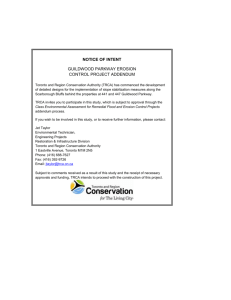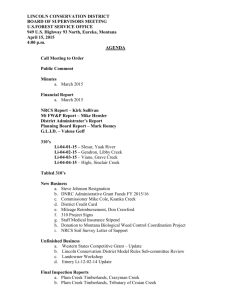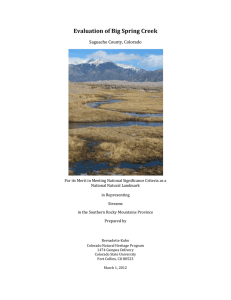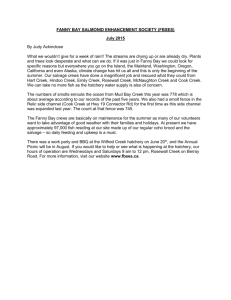Categories of Interest
advertisement
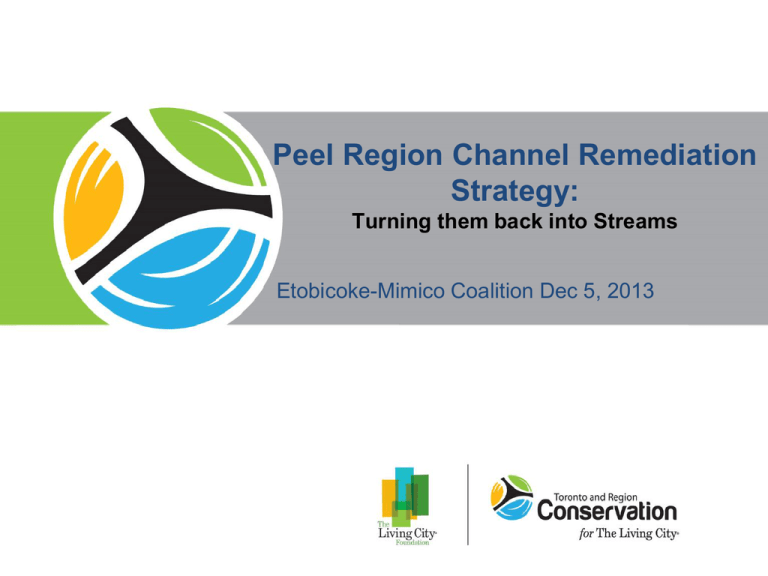
Peel Region Channel Remediation Strategy: Turning them back into Streams Etobicoke-Mimico Coalition Dec 5, 2013 Spring Creek Subwatershed – Pilot Project Project Activities to Date • Flood Risk Modelling – candidate sites • Categories of Interest • Metrics, Analyses, Ranking • Matrix - Weighted • Priority Sites and Reaches for Spring Creek Categories of Interest Weight Categories of Interest •Terrestrialygfggthtt Habitat Connectivity: Contributing to TNHSS objectives, biodiversity goals, and consistency with principles used to develop stream crossing guidelines. Forest Health: Achieving a suite of natural infrastructure objectives, including urban forest targets and human well being. Instream Ecology: Increasing the benefits to the fish community. Restoration Opportunity Planning: Identifying multiple benefits and feasibilty of implementation Urban Non-Urban 5 17 5 17 5 17 5 17 Flexibilty of Design: Considering the site conditions that allow for natural channel design to have least impacts related to water level changes 20 5 Infrastructure Risk: Examining areas that are in need of repair; and relative location to critical infrastructure 20 5 20 5 20 17 100 100 Public Use: Increasing the value and safety of the stream to the local community Coordination with Municipal Capital Works: Increasing potential to fund projects and minimizing neighbourhood disruption. Total • Metrics • Ranking 1-5 Next Steps • Technical Steering Committee Endorsement – Meeting December 10, 2013 • Fluvial Geomorphic Assessment – Spring 2014 – Reach B – Detailed Design Guidance – Informing opportunities between sites • First Project in Spring Creek – TRCA will likely lead in 2014 • Challenges Facing Many Sites – Channel Design – narrow, infrastructure – Public and Political Support – Funding Thank You! Christine Tu, Senior Aquatic Ecologist, Research & Development ctu@trca.on.ca Site 7 Conditions


